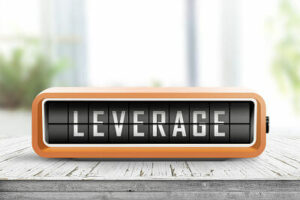The Power of Leverage
 You go to work, you get a paycheck. You leverage your time for money in the form of a job. When it comes to leverage, most of us are taught that simple formula – leverage a narrow set of skills, put those skills to work and earn money in exchange for your time.
You go to work, you get a paycheck. You leverage your time for money in the form of a job. When it comes to leverage, most of us are taught that simple formula – leverage a narrow set of skills, put those skills to work and earn money in exchange for your time.
But with that formula, you are just scratching the surface of the leverage you can apply to wealth-building. Building wealth can and should happen using other forms of leverage as well. The power of leverage can come from:
- Information and Ideas
- Capital or Money
- Other People’s Time/Money
In a previous article, we took a look at a comparison of an employer 401(k) match and a rental property. In that example, we compared the purchase of a $75,000 investment property to putting $12,000 into a 401K (between your contribution and the employer match). Let’s say that 401(k) investment got a very generous 10% return or $1,200 by the end of the year. Does that unrealized gain really change anything for you? It’s in a 401(k) so you can’t use it or spend it but you DO end the year with a $13,200 asset.
How about that rental property? In the scenario we shared you put down $15,000 on the mortgage, but what you secured was a $75,000 asset. That is quite a bit more than the $13,200 asset you gain from the 401(k) investment. So, in your first year on the asset column, you have $75,000 and in your 401(k) you have $13,200. Plus you had to work 2,000 hours to get the $6,000 employer match – and none of this is now money. You are deferring it until you are at least 59.5 or face a penalty of 10%. We estimate that the process of purchasing your first income property takes about 200 hours – 1/10th of the time you took to get that employer match.
In year one, with one rental property, you have an asset value over 5 times larger than the 401(k) with maximum contributions. If you are curious, take a quick look at this article where we went beyond year one, expanding your investment property portfolio over a 7 year period. In that model, we purchased 4 homes for $75,000 each over the course of 7 years. That is $300,000 in the asset column. Of course, there is mortgage debt involved here, but the asset value is $300,000.
Let’s take a closer look at the numbers on a 401(k). We’ll assume a 5% wage growth over 7 years. You contribute 6% of a $100,000 salary, and your employer matches 6%. The return on this is 10% annually. That is a good economic run for a lot of people. Here is a chart that outlines what happens over those 7 years:
[table id=4 /]
So after 7 years with strong economic tailwinds, you have a total value of $142,986. How do these two scenarios compare? With the debt service on the rental properties, I would estimate that you would have about $150,000 in assets after you factor in the mortgages. But you have more than that. You also have 4 sources of income providing nearly $20,000 of wealth, income and opportunity each year.
With the 401(k) you have $142,000 locked away until age 59.5. Even if you decided to take some out before that, that money would be 100% taxable with a penalty of 10%. So, between taxes and penalties, you would be losing around 40% of what you would draw from the 401(k), prior to the age of eligibility.
The two don’t even compare.
How many ways can you use the power of leverage? When you combine this real estate strategy (your capital, other people’s money) with our Uncommon Banking (ideas, capital) and shredding concept, you will really start to see the power of leverage.